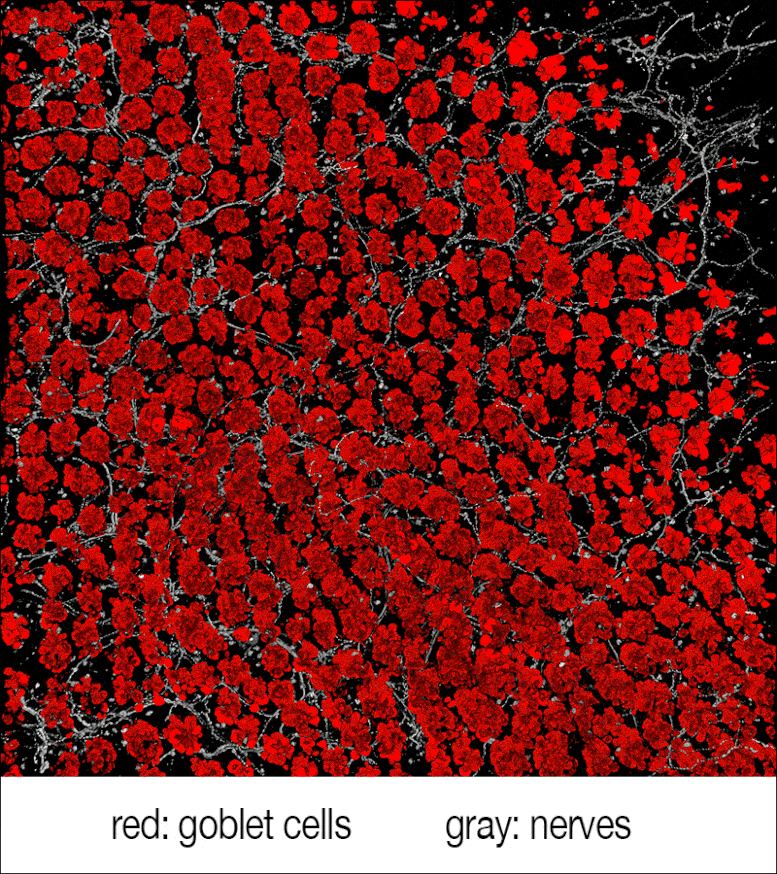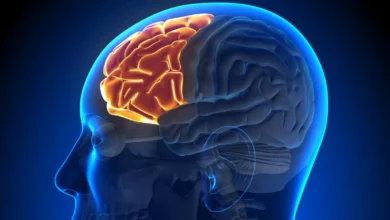
Lead Image: The research sheds new light on how sex determines the mechanisms by which various synapses monitor and regulate dopamine signaling.
A study in mice reveals a surprising difference between male and female dopamine synapses supporting attention, movement, motivation, and pleasure.
Almost all neuropsychiatric disorders have different prevalences, ages of onset, and clinical symptoms in men and women. Attention-Deficit/Hyperactivity Disorder (ADHD) and Autism Spectrum Disorder (ASD) are two conditions with significant sex bias, with about four males diagnosed for every one female.

It is unclear whether this skewed ratio results from the roles played in brain development by sex-specific DNA sequences or hormones, or if it represents how biological mechanisms and environmental factors elicit behavioral patterns differently in males and females.
Regardless of origin, changed behavior in these disorders indicates a change in the function of important brain circuits set up throughout development, refined throughout life, and coordinated by the actions of brain chemicals called neurotransmitters. Dopamine is a crucial neurotransmitter whose powerful actions enable motor initiation and coordination, motivation, reward, and social behavior, as well as attention and higher cognitive function. It also plays an important role in the behaviors changed by ADHD and ASD.
Although dopamine-sensitive brain circuits engaged in these processes have been under scrutiny for decades, and in the case of ADHD, are the target of medications such as Adderall and Ritalin, the intrinsic sex-dependent differences in these pathways that could guide more precise diagnoses and treatments have only recently begun to be elucidated.
To better understand how dopamine levels at brain synapses are managed, neuroscientists from Florida Atlantic University, along with collaborators at the University of North Dakota School of Medicine and Health Sciences, have now added a significant piece to this puzzle by establishing key differences in the molecular dopamine disposal machinery in the brains of male and female mice.
The new research published in the journal Molecular Psychiatry and led by Randy Blakely, Ph.D., professor of biomedical science in FAU’s Schmidt College of Medicine and executive director of the FAU Stiles-Nicholson Brain Institute, provides new insight into how sex determines the mechanisms by which distinct synapses monitor and regulate dopamine signaling. Moreover, the impact of the sex differences described is particularly pronounced when the mice express a human genetic variant found in boys with either ADHD or ASD.
“Often, due to assumptions that sex hormone variation will cloud data interpretations, and that use of one sex will cut animal use and costs in half without a loss of key insights, many researchers using animal models to study brain disorders work chiefly with males, even more reasonable when modeling disorders that exhibit male bias,” said Blakely.
In a prior study, looking for genetic changes in dopamine regulatory genes in children with ADHD, Blakely and his team identified a gene variant that alters the function of the dopamine transporter (DAT) in a peculiar way. Normally DAT acts to remove dopamine from synapses, acting like a nanoscale dopamine vacuum cleaner. When the DAT variant was expressed in cells, however, it “ran backward,” spitting out dopamine rather than efficiently removing it.
After engineering the variant into the genome of mice, Blakely’s team found changes in behavior and drug responses predicted by this anomalous DAT behavior, with an emphasis on traits linked to pathways related to locomotor activation, habitual behavior, and impulsivity. Notably, these studies were performed exclusively with male mutant mice.
Blakely and Adele Stewart, Ph.D., first author of the report, a research assistant professor of biomedical science in FAU’s Schmidt College of Medicine and a member of the FAU Stiles-Nicholson Brain Institute, recognized there was more to be done, particularly with respect to how females would handle the mutation. Would the DAT mutation impact the same brain regions and behaviors in females as it had done in males?
The answer is a resounding no. Females show effects of the mutation in brain regions unaffected in males and vice versa. Further work revealed that this switch is due to a circuit flip in how brain pathways in males and females use a key DAT regulator protein to magnify the backward activity of the transporter.
The behavioral consequences of this region-specific, sex-biased pattern of DAT regulation are profound, with the mutant DAT altering behaviors in a pattern unique to each sex. For example, mutant females appeared more anxious and had issues with novelty recognition compared to wild-type females. Males on the other hand are less social and display increased perseverative behavior, changes not seen in females.
“Our work clearly shows that the female mutant DAT mice are not ‘protected’ from the impact of the mutation, but rather, exhibit a unique set of behavioral changes linked to an ingrained, sex-biased architecture of the dopamine system,” said Stewart. “The same variant also has been found in two unrelated boys with ASD, a disorder that often also displays comorbid ADHD.”
Interestingly, the only reported clinical occurrence of the DAT variant in a female involved a diagnosis of bipolar disorder (BPD). Both the mania and depression associated with BPD have been suggested to be linked to altered dopamine signaling. Blakely’s group also has reported high impulsivity traits in a female carrier of the same mutation studied in this latest paper, suggesting that overlap of traits linked to dopamine can also occur between the sexes, or perhaps the forms of impulsivity (e.g. waiting versus action) may be involved.
A “resilience” framework often is used to explain discrepancies in the sex bias observed in neuropsychiatric disorders. However, recent evidence suggests that sex bias can be due, at least in part, to differences in symptomology and associated comorbidities and the resultant failure of current diagnostic instruments to assure the identification of the same disorder in both sexes.
“While we understand that there are biological differences between rodent and human brains, studies like ours provide an important opportunity to explore biological mechanisms that contribute to sex differences in risk for neuropsychiatric diseases,” said Stewart.
“What our study shows is that behavioral generalizations across the sexes may limit diagnosis of mental illness, particularly if one sex translates alterations into outward signs such as hyperactivity and aggression versus more internal manifestations such as learning, memory, and mood, even when the same molecular pathology is at work. What is more, our work supports the idea that treatment strategies should be cognizant of the sex-dependence of neuronal signaling mechanisms rather than assuming treatment that what is good for the goose is good for the gander. In fact, such therapies may either not be good for the gander at all, or good for a completely different kind of disorder.”
The research provides a clear example of how genetic changes can have sex-dependent effects on physiology and behavior, depending on whether other co-regulatory genes are naturally expressed by the same cells.
“Because the basis for the differential response to the DAT mutation is the presence or absence of DAT regulation in these two areas, the implications do not just apply to the few individuals with the genetic variant nor are limited to ADHD and ASD,” said Blakely.
“Investigators exploring other disorders linked to altered dopamine signaling should consider whether the mechanism we have uncovered could drive sex-dependent features of these diseases. By extension, we now need to consider whether the mechanism we have uncovered contributes to sex-dependent ways in which dopamine signaling drives normal behavior.”
Reference: “Behaviorally penetrant, anomalous dopamine efflux exposes sex and circuit dependent regulation of dopamine transporters” by Adele Stewart, Felix P. Mayer, Raajaram Gowrishankar, Gwynne L. Davis, Lorena B. Areal, Paul J. Gresch, Rania M. Katamish, Rodeania Peart, Samantha E. Stilley, Keeley Spiess, Maximilian J. Rabil, Faakhira A. Diljohn, Angelica E. Wiggins, Roxanne A. Vaughan, Maureen K. Hahn and Randy D. Blakely, 18 September 2022, Molecular Psychiatry.
DOI: 10.1038/s41380-022-01773-7
The study was funded by the National Institutes of Health (NIH).





